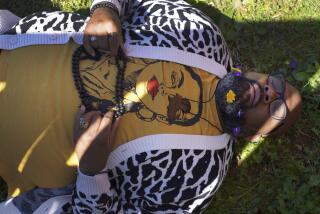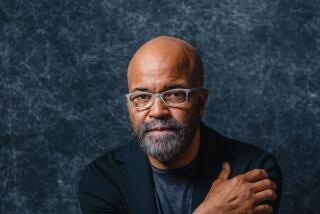‘View’ Dispels Some Myths, but Could Do More
In this slim book, a monk from Blue Cloud Abbey in South Dakota, one of the first communities to introduce “The Cloister Walk’s” Kathleen Norris to monasticism, writes of living with a small (and dwindling) number of celibate men, 130 miles south of Fargo, N.D.
Brother Benet Tvedten (pronounced “tweed-in”) has been a monk for more than 40 years, most of them spent at Blue Cloud. His central message in “The View From a Monastery” is to dispel myths about monks.
“Pious people think we are holy,” he says. “People who don’t know much about religion think we are peculiar. The truth of the matter is that we are neither.” He writes of the monk who pressed his “calendar art” paintings on unwitting guests, the one who raised turkeys and geese in his cell and the man who late in his life simply stopped going to church--all examples of unexpected behavior one might find in monasteries.
Brother Tvedten is a Benedictine, a Roman Catholic order founded in the 6th century by a man who escaped the noise and commerce of Rome and lived alone in a cave. But even hermits don’t get their way--others soon followed him--and he ended up founding a monastery. St. Benedict’s order was partly founded as an alternative to the increasingly cynical and corrupt church of his day. In Benedict’s house, the wealthy gentry who joined had no more authority, power or privilege than the poorest peasant.
For his fellow brothers, Benedict wrote a simple, practical and enduring rule, a document that has survived 1,500 years remarkably intact. One must work and pray, Benedict said, and time should be divided into those activities. The Benedictine Rule urges followers to remain in one place, to avoid arrogance and not to take themselves too seriously. During the season of Lent, as Brother Tvedten points out, Benedict cautioned against doing more penance than is good for you.
*
Brother Tvedten tells lots of stories, nearly all of them designed to let us know that monks are normal human beings and that monasteries are not places to escape life. In a brief passage, he writes of how he used to drink vodka from the liquor cabinet and lie about its absence--then, how he joined Alcoholics Anonymous.
“St. Benedict always gives us another chance,” Tvedten writes, “a new beginning. . . . In my program of recovery, I was surprised to discover that the 12 Steps [of AA] had so many parallels in the Rule of St. Benedict. Working at sobriety has been something like becoming a monk all over again.”
This brief section of the book is honest and well-told, but it’s also the place at which the main flaw of the book is most evident: Tvedten spends a few paragraphs on his alcoholism, then moves on to a story about a communal visit to the local optometrist. He doesn’t dive beneath the telling of the events, and so it is with the rest of the book. We don’t know enough about Brother Tvedten’s own life nor do we know enough about his brethren. Monks are not just normal human beings; they are normal human beings who have decided to live radically different lives.
I rely on an order of monks, this one Episcopal, in my own hometown. The Order of the Holy Cross taught me the full meaning of the old word “hospitality,” by taking me in shortly after my brother’s death when I had no words, not even for prayer. For hundreds of years, religious orders have been countercultural communities, living commentaries on life going on outside their walls, places from which to stand and take a look at life, and places to go when you can’t stand up anymore. It’s a kind of work that’s crucial and very hard to describe.
Thomas Merton managed to do it most of the time in his books and diaries. But Merton was a full-fledged writer before he entered Gethsemani monastery and, as his letters reveal, even Merton failed to tell all of the truth all of the time. I’ve been waiting for a modern Merton, a monk or nun who could describe monastic life at the end of the 20th century, someone who could help us see ourselves from a radical vantage point, as if looking through a telescope from its other end. Brother Tvedten is to be applauded for his dedication to a different life. In his next work, maybe he’ll go deeper.
Nora Gallagher is the author of “Things Seen and Unseen: A Year Lived in Faith.”
More to Read
Sign up for our Book Club newsletter
Get the latest news, events and more from the Los Angeles Times Book Club, and help us get L.A. reading and talking.
You may occasionally receive promotional content from the Los Angeles Times.








